
AI in Performance Management: How to Optimize Employee Planning in 2025

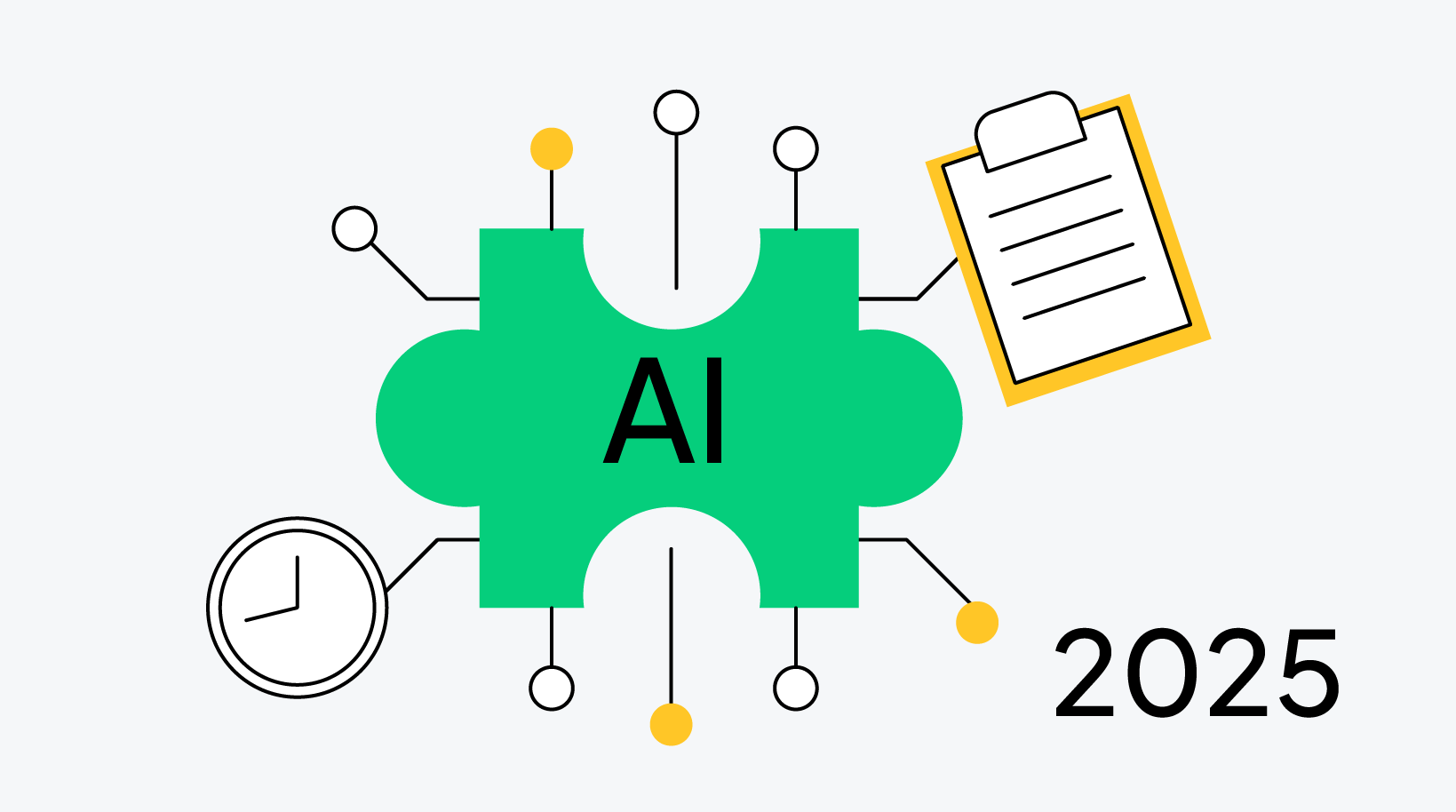
- Key AI-Driven Features That Transform Performance Management
- Why is Using AI Essential in Skills Management?
- Potential Risks of Using AI in Employee Performance Management
- Future of Performance Management: AI-Enhanced, Not AI-Controlled!
AI’s new role in performance management emphasizes a skill-first approach!
AI has been proven to help make the performance management process much easier and less time-consuming.
Research indicates that by the end of 2025, job titles and descriptions will no longer cut it, and organizations will more likely turn to skills-centric models for more efficiency.
Discover how to track and grow talent and build agile teams with our AI-powered skills management software.
Key AI-Driven Features That Transform Performance Management
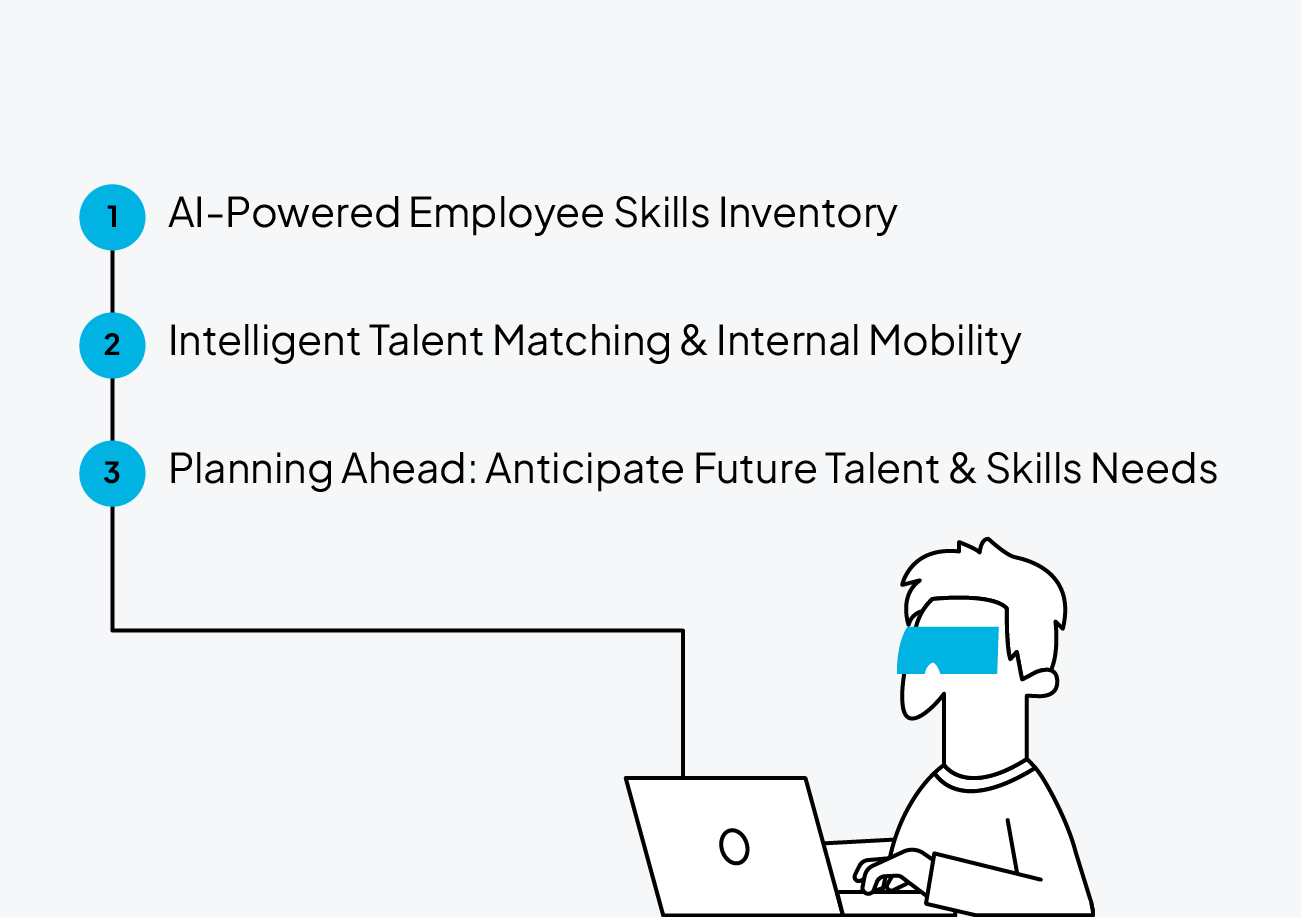
Organizations are now realizing that adopting an AI-driven performance management approach, which focuses on identifying talent shortages and closing skills gaps, can pave the way for employee growth and engagement.
Here, we explore three key AI-driven features that are fundamentally reshaping how organizations manage and retain their talent:
1. AI-Powered Employee Skills Inventory
Performance is not only measured by what an employee did.
It’s measured by what more they could have done or what they are capable of doing!
Real-time skills matrix software makes the skills tracking process much smoother for HR leaders.
It helps identify, categorize, and update employee skills automatically, ensuring the organization is fully aware of the changes in the talent pool.
It can also reflect on past project contributions to discover employees’ hidden potential and growing skills that might be vital to the organization’s success in the future.
2. Intelligent Talent Matching & Internal Mobility
It’s painful to see someone you once hired because of their shining potential feel stuck at their job, unable to finish tasks, and losing the spark they used to have.
AI-driven role matching focuses on identifying employees in the wrong roles, assigning them roles that best match their skills and talents, eventually resulting in retention enhancement.
The internal talent marketplace improves talent mobility by relying on existing employees and the existing talent pool to fill skills gaps instead of hiring externally, which would be expensive and a waste of resources.
Are you curious to know how global leaders are rethinking performance management strategies in the age of AI?
In this quick, insightful video, Kim Morrick, the global leader for AI-First HR at IBM Consulting, thoroughly unravels how AI is being used by successful companies to create a fairer workplace, continuous performance review systems, and increase engagement and retention.
Whether you are an HR leader or just someone exploring the future of work, this is a must-watch!
3. Planning Ahead: Anticipate Future Talent & Skills Needs
Employing modern employee planning is about adopting a forward-looking strategy, anticipating a change before it happens, and checking your options to deal with it in the best way possible.
Skill management tools with AI implementation help analyze historical company data and market trends, showing patterns that foretell upcoming talent gaps.
This gives HR leaders more time to plan out personalized growth roadmaps for employees to upskill and align their individual development with future company needs.
Why is Using AI Essential in Skills Management?
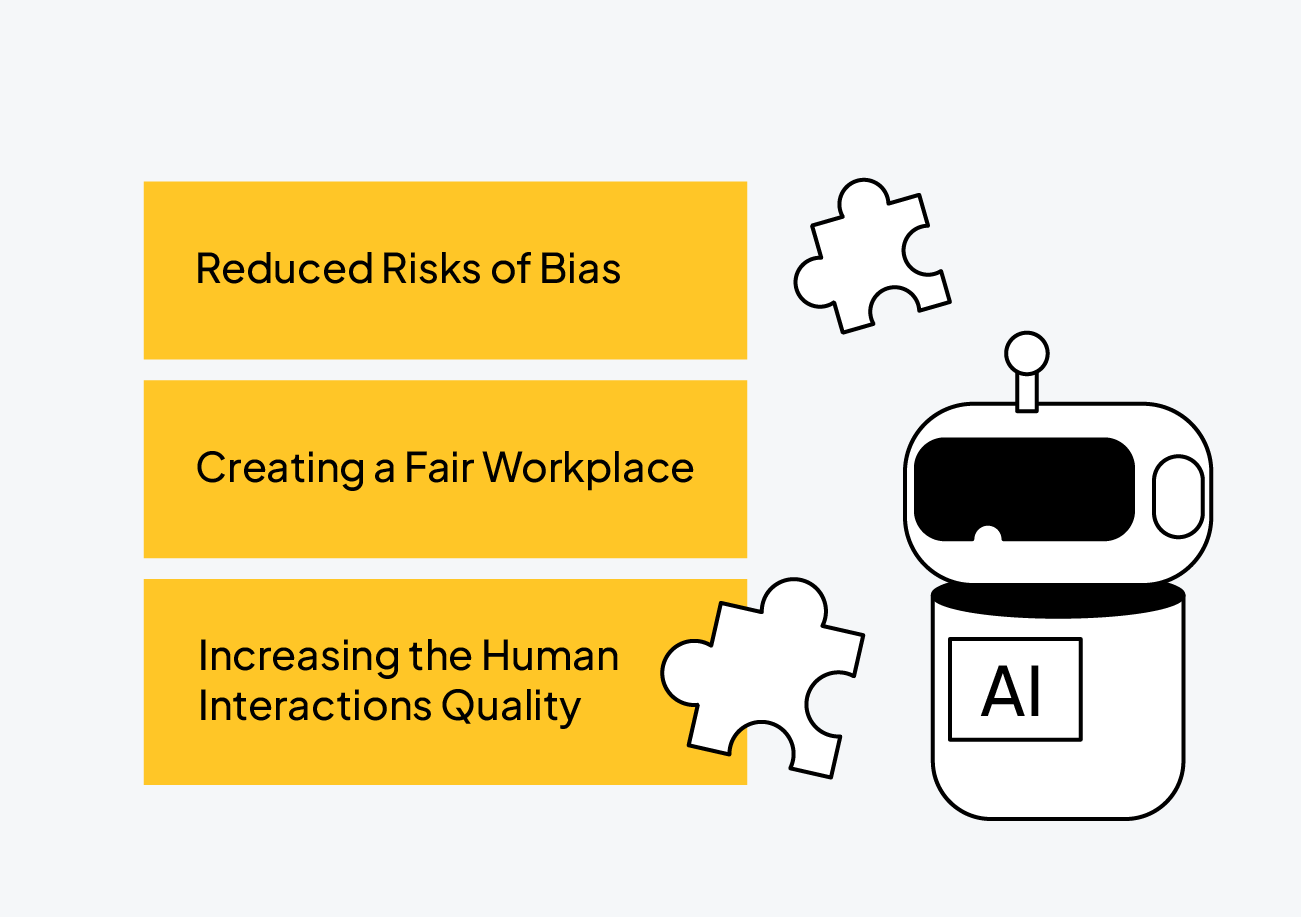
With tight budgets and a constant fear of failure, HR and business leaders struggle to attract the right talent, keep them engaged, and identify skill gaps before they turn into major obstacles.
Unlike the traditional methods focusing on tracking KPIs and flagging low performers, the alternative AI approach is completely skills-based, ensuring that the right people are in the right roles while being constantly upskilled.
In such an organization, no talent goes unnoticed or underutilized!
There are three main reasons that make AI implementation a necessity in your performance management system:
Reduced Risks of Bias
Human judgment is inherently biased!
A manager’s judgment, for instance, can be deluded based on employees’ recent events, be it bad or good, emotions, or unconscious preferences.
AI in employee performance management smoothes out the process and abolishes unnecessary and unintended bias.
Organizations can hold 360–degree feedback sessions with employees, gather thorough reports and detailed analytics, and help foster a healthy learning environment.
Creating a Fair Workplace
Most employees look for a fair workplace where their talent is appreciated just as much as their other colleagues.
Implementing AI in an organization’s skills management system helps managers track each employee individually, give feedback on various aspects of their performance over time, and finally present a clear and objective picture of employee performance.
Increasing the Human Interactions Quality
One of the less-recognized benefits of leveraging AI in performance management is the ability to humanize everyday work!
By automating a lot of time-consuming administrative tasks, AI allows employees to focus on higher-value tasks, as well as their own career progression.
It also gives the managers more time to engage in meaningful conversations with their employees and listen to their concerns effectively.
Ultimately, it makes the workplace more dynamic, keeps employees engaged, and pushes them beyond their boundaries to improve their skills and self-worth.
Potential Risks of Using AI in Employee Performance Management
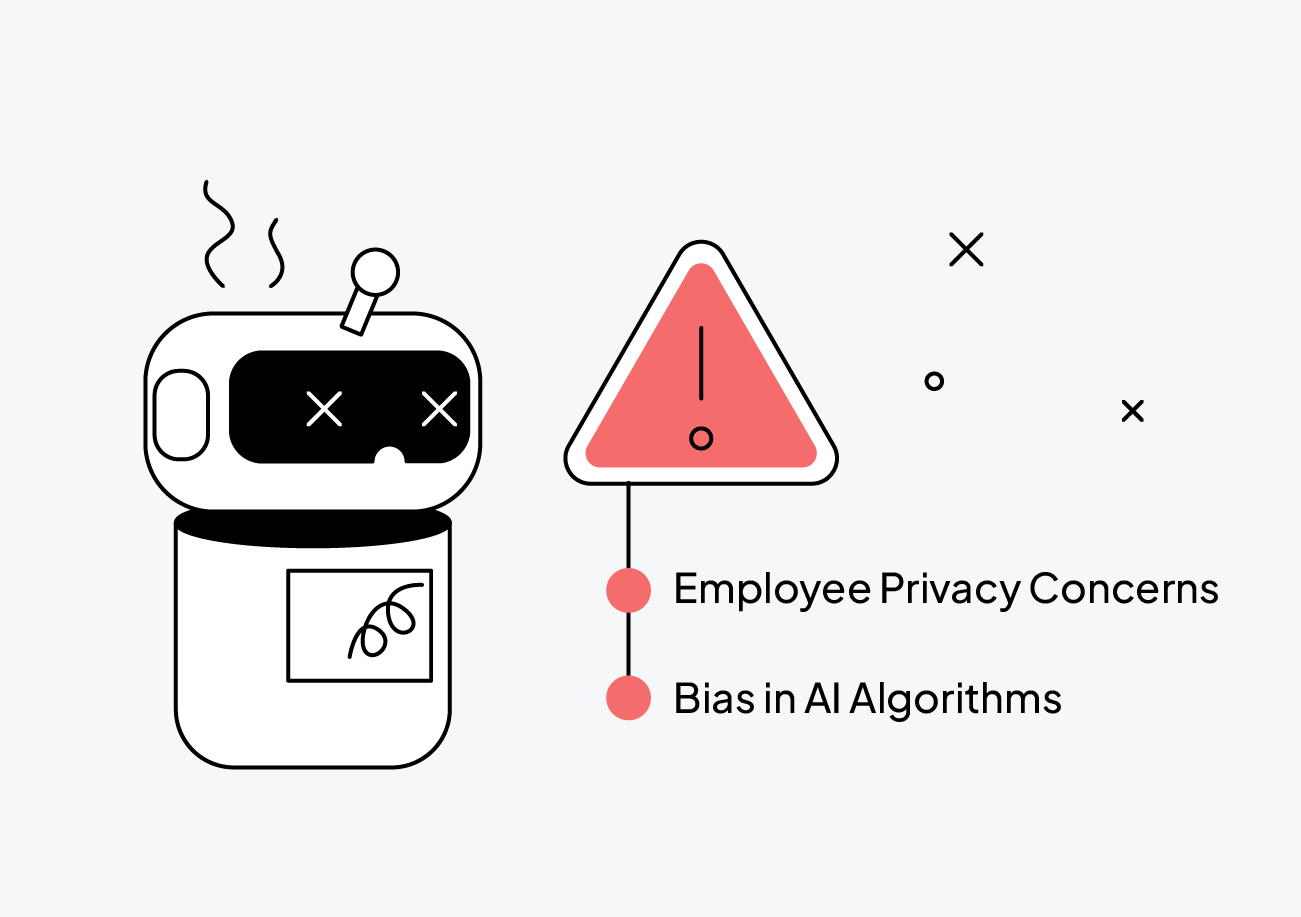
The initial confusion and fears about AI were solely because people misunderstood the purpose and how it can actually help—rather than replace their jobs!
Now, integrating AI in performance management is considered a key part of any successful organization, focusing on areas that matter the most and closing skills gaps before they lead to major issues.
However, like any other tool, AI comes with its own risks. To use it effectively, it’s crucial to understand the risks and learn how to mitigate potential downsides.
💡Here are a few key things you should watch out for:
Employee Privacy Concerns
One of the first concerns among employees is the fear of their privacy being invaded.
Let’s face it: nobody likes being under a magnifier, treated like a child with strict parents constantly tracking them.
The constant tracking can lead to anxiety, distrust, and a decrease in productivity among employees in a workplace.
However, there is a better way to deal with it, and it’s quite simple: transparency.
Being transparent about the purpose of AI implementation in performance management goes a long way in gaining employees’ trust and creating a safe atmosphere where they don’t feel threatened by their job security.
Bias in AI Algorithms
While AI promises objectivity, there is still a chance for error in AI algorithms, especially in delicate matters like AI for performance management.
The skewed outcomes sometimes stem from flawed model design, biased training data, or, in most cases, a lack of contextual understanding.
AI bias, showing up as gender, age, race, or socioeconomic biases, creates flawed data.
This can lead to unfair employee flagging, undervaluation, or limited growth opportunities based on past inequalities.
That’s why the agyleOS platform includes several features to address these concerns:
✅Skills-First Approach: agyleOS bases evaluation metrics on real-time skills data and an individual’s potential for growth.
✅Human-in-the-Loop Design: agyleOS only focuses on generating insights, leaving the final decision to people in charge. This allows managers to interpret the results within context.
✅Model Auditing: AI models in agyleOS are regularly tested and controlled for errors and risks of bias, ensuring diverse data representation.
Learn where your workforce stands and match the right people to the right roles with our AI-driven skills gap analysis to pinpoint improvable aspects!
Future of Performance Management: AI-Enhanced, Not AI-Controlled!
Performance management is no more the typical annual reviews or static scorecards. It’s now about recognizing real-time growth and creating a workplace your employees thrive in and are proud to be a part of!
After realizing traditional performance tracking tools are too static, subjective, and often unaware of your people’s potential, AI came to bring clarity where there was once only guesswork.
By combining AI-powered skills tracking, role-matching, and proactive workforce planning, your organization will unlock a new strategy that is not only data-informed but also completely people-first.
By submitting this form, I confirm that I have read the privacy policy and that I consent to the processing of my personal data by agyleOS for the purposes stated. In the event of consent, I can revoke my consent at any time. Furthermore, by submitting the form, I agree to the general terms and conditions.
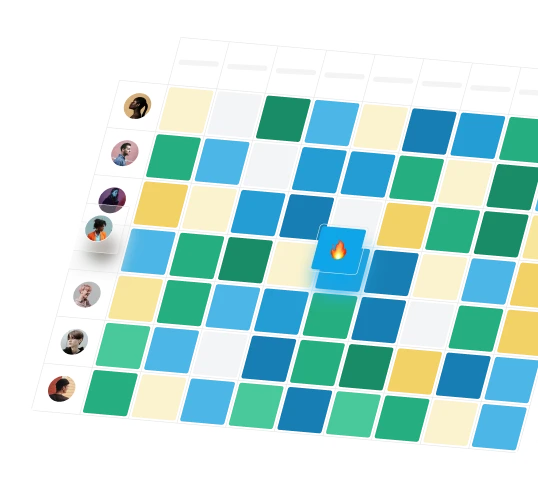

- Product
- Resources
- Compare
- Company
